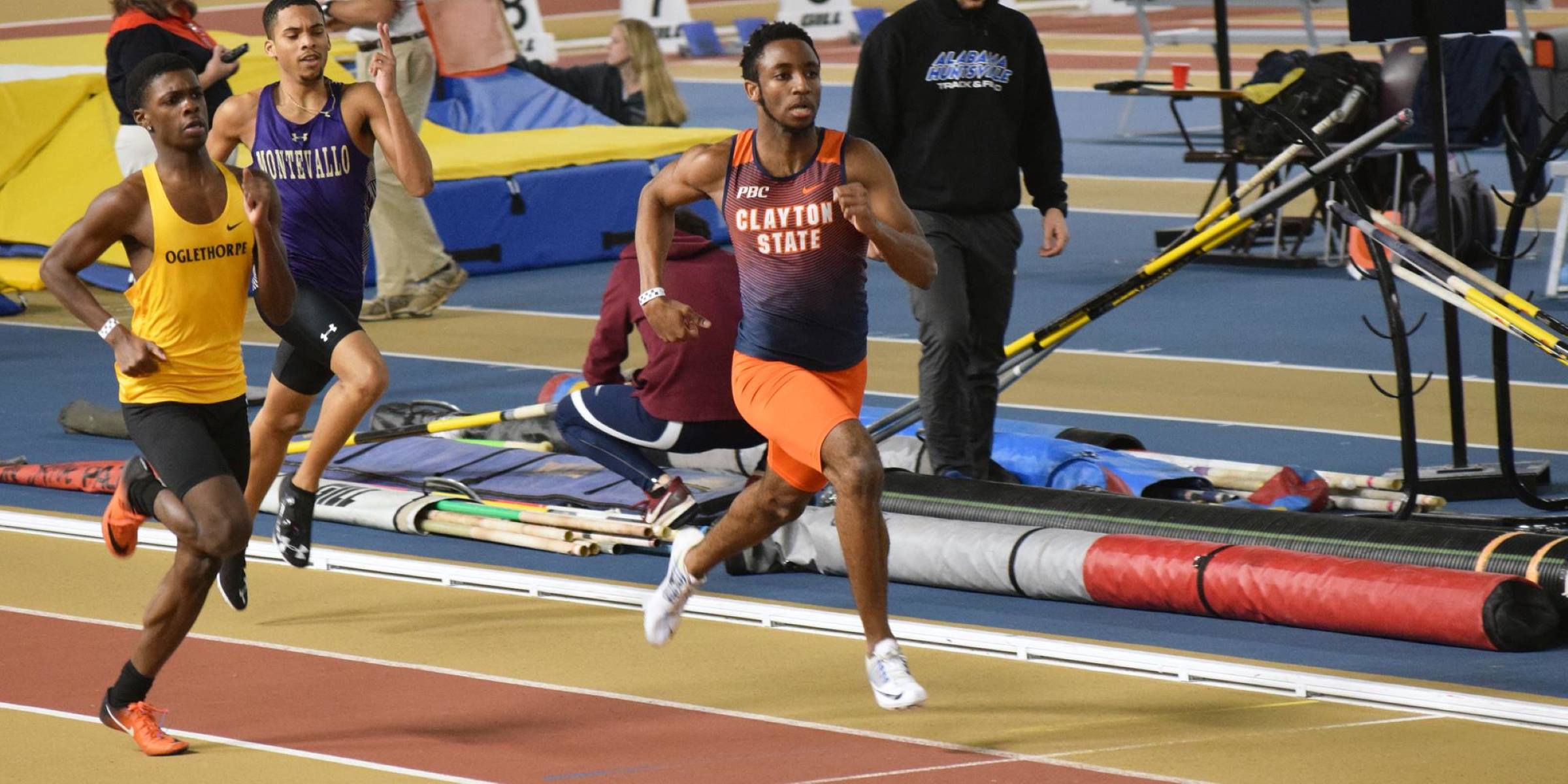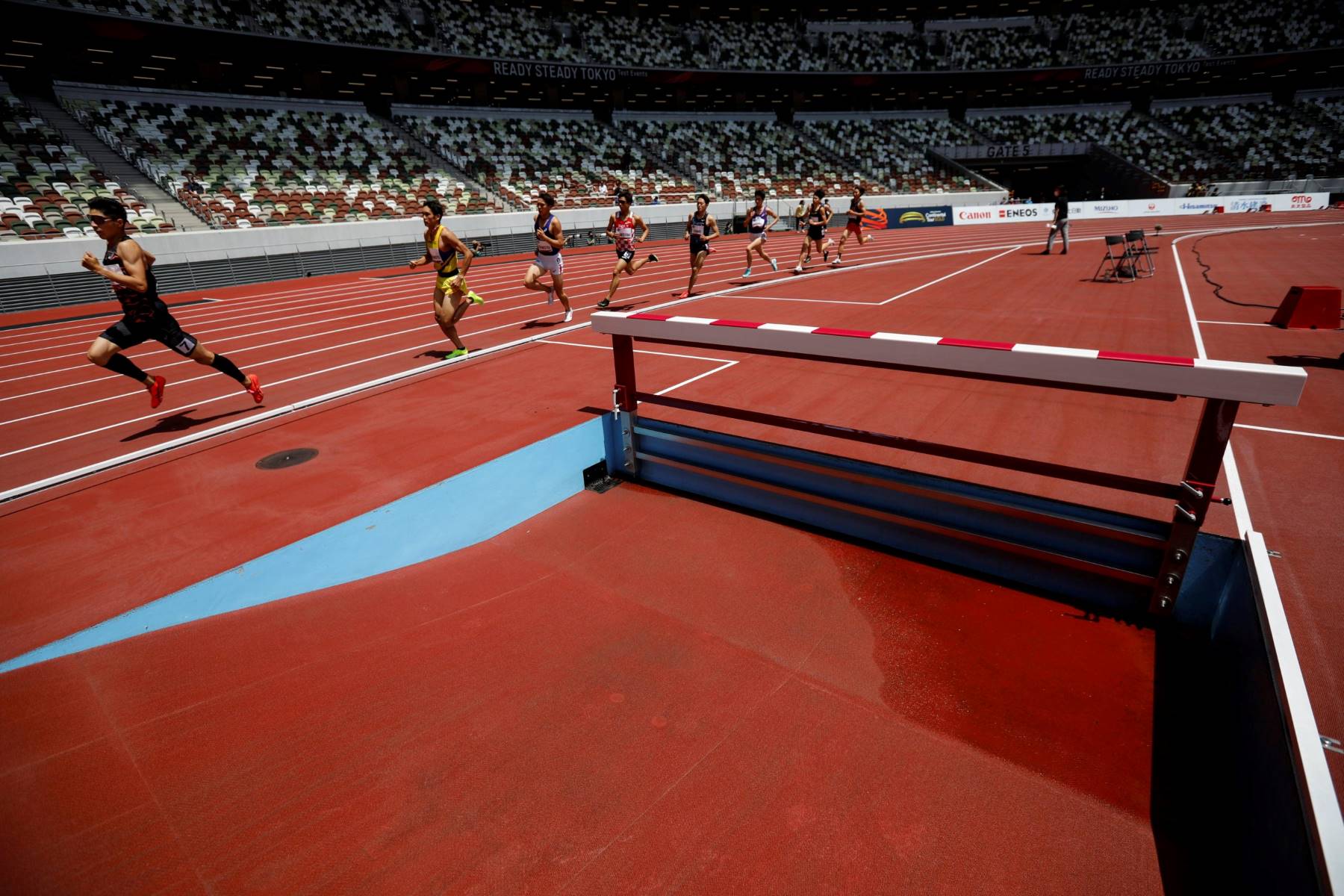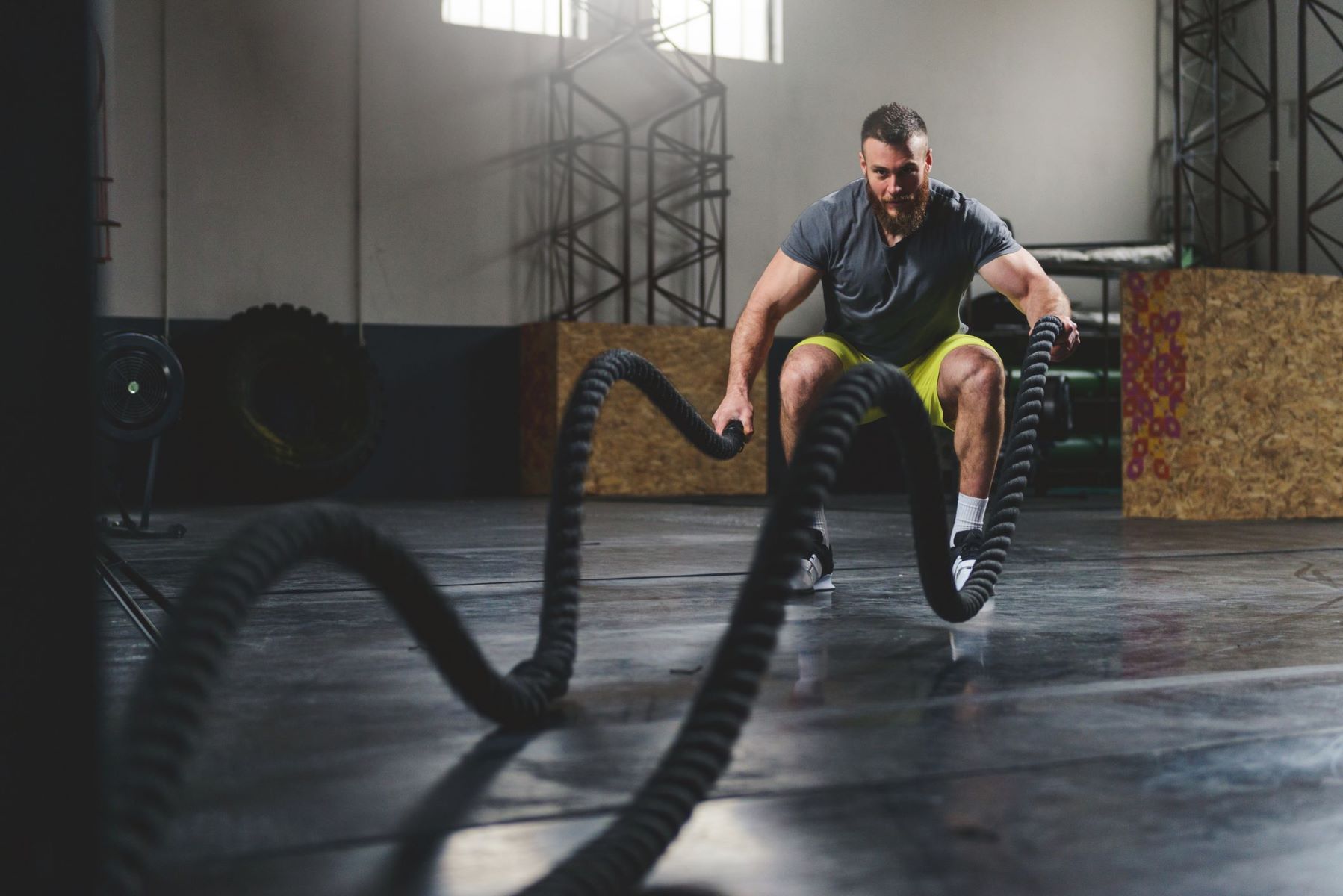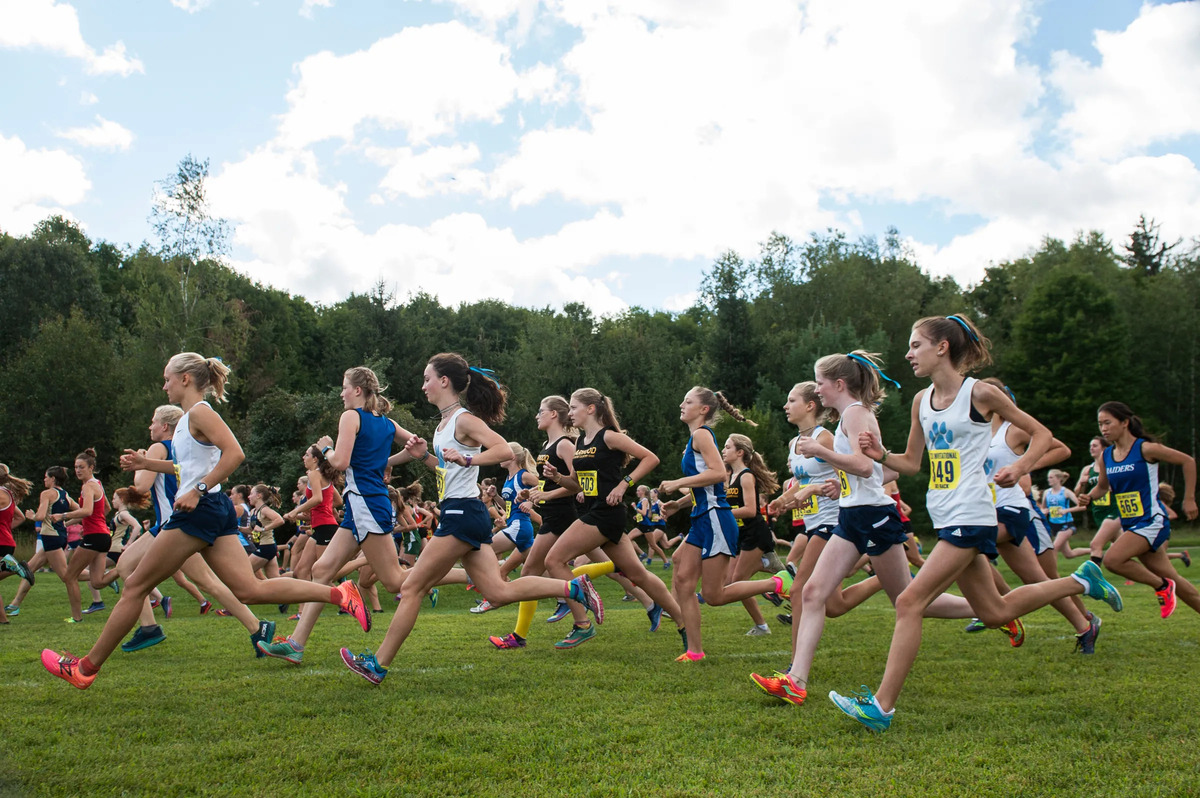

Featured
What Is The Anchor In Track And Field
Published: September 6, 2023
Discover what the anchor in track and field is and its essential role in relay races. Featured in this comprehensive guide for athletes and enthusiasts.
Introduction
Track and field is a sport that captures the essence of speed, agility, and teamwork. Within this sport, relays play a vital role in showcasing the collective strength of a team. And at the heart of every relay team is the anchor runner, a position that holds a special significance in the world of track and field.
The anchor runner is the final member of a relay team who carries the baton across the finish line. They are responsible for bringing the team to victory or securing a fast time. Often regarded as the “closers” of the relay, the role of the anchor runner is not only crucial but also highly demanding.
Throughout this article, we will delve into the definition and importance of the anchor leg in track and field relays. We will explore the strategies behind selecting an anchor runner, discuss the characteristics of a successful anchor runner, and provide insights into the training and preparation required for this position. Additionally, we will shed light on common mistakes to avoid in the anchor leg.
Whether you are an athlete, a coach, or a track enthusiast, understanding the role and significance of the anchor runner will give you a deeper appreciation for the sport and its intricacies. So, let’s dive in and uncover the fascinating world of the anchor leg in track and field relays.
Definition of Anchor in Track and Field
In track and field, the anchor is the final runner in a relay team who carries the baton and completes the last leg of the race. Also known as the anchor leg, this position is of utmost importance as it determines the success of the team and can often make or break the overall outcome of the relay.
The anchor runner receives the baton from the preceding runner, usually the third leg, and their main objective is to maintain the team’s lead or make a significant push to overtake opponents. They must possess exceptional speed, endurance, and mental fortitude, as the anchor leg is typically the most competitive and intense phase of the relay.
The anchor leg is known for its high-pressure nature, often featuring thrilling head-to-head battles between anchor runners from different teams. It is not uncommon to witness dramatic comebacks or photo-finishes, making the anchor leg one of the most exciting and highly anticipated events in track and field.
Teams strategically place their strongest runner in the anchor position, leveraging their speed and ability to close gaps quickly. By doing so, they aim to secure victory or achieve the fastest time possible. The anchor runner’s performance can greatly impact the overall success of the relay team, and their ability to handle pressure and execute efficient technique is crucial.
It is important to note that the length of the anchor leg may vary depending on the type of relay. In a standard 4×100-meter relay, the anchor runs the final 100 meters. However, in longer relays like the 4×400-meter or distance medley relay, the anchor leg can be 400 meters or longer.
Now that we have a clear understanding of the anchor leg’s role and significance in track and field relays, let’s explore the strategies behind selecting an anchor runner.
Role of the Anchor Runner in Relays
The anchor runner in relays plays a pivotal role in determining the overall success of the team. Their responsibilities extend beyond just running fast; they must possess exceptional race strategy, mental toughness, and the ability to perform under intense pressure. Let’s delve into the key roles and responsibilities of the anchor runner in relays.
1. Closing the Gap or Maintaining the Lead: The primary objective of the anchor runner is to close any gaps between their team and the leading team or maintain a comfortable lead if their team is in the front. This requires a combination of speed, endurance, and tactical awareness. The anchor runner must gauge the position of their team in the race, analyze the strength and weaknesses of their opponents, and make strategic decisions to close gaps or protect the lead.
2. Finishing Strong: As the final leg of the relay, the anchor runner must have the ability to accelerate and finish the race with a burst of speed. They often find themselves in intense head-to-head battles with anchor runners from other teams, making their performance crucial in securing victory. The choice of when to make their move and how to tactically execute it can make all the difference in the outcome of the race.
3. Baton Exchange: While the anchor runner is responsible for bringing the team across the finish line, they must also execute a seamless baton exchange. The baton must be passed smoothly and efficiently from the preceding runner, ensuring no time or momentum is lost in the hand-off. Communication, timing, and trust between the anchor runner and their teammate are essential for a successful baton exchange.
4. Mental Fortitude: The anchor leg of a relay is often filled with pressure and anxiety. The anchor runner must be mentally prepared to handle the weight of the entire team’s expectations, as well as their own personal goals. They must stay focused, remain composed, and channel any nervous energy into a positive drive to perform their best.
5. Team Support: The anchor runner is not just an individual performer; they are an integral part of a relay team. As such, they must provide support and encouragement to their teammates throughout the race. This includes motivating teammates, offering words of encouragement, and cheering them on from the sidelines. Building a cohesive team dynamic and fostering a sense of camaraderie is crucial for a successful relay.
The role of the anchor runner in relays extends far beyond just running; they must be a strategic thinker, a strong finisher, and a supportive teammate. Next, we will explore the strategies for selecting an anchor runner.
Strategies for Selecting an Anchor Runner
Choosing the right anchor runner for a relay team can greatly impact the team’s success. Coaches and teammates must consider various factors when selecting an athlete for this crucial position. Let’s explore some strategies for selecting an anchor runner in track and field relays.
1. Speed and Endurance: The anchor runner should possess exceptional speed and endurance. They need to have the ability to maintain a fast pace throughout their leg of the relay, especially when facing strong competition. Look for athletes with a history of consistent speed and the stamina to perform under pressure.
2. Ability to Close Gaps or Protect Leads: The anchor runner should have a reputation for closing gaps or protecting leads. They should possess strong tactical skills, knowing when to make their move and how to strategically outperform their opponents. Look for athletes with a track record of strong finishes, comebacks, and the ability to handle pressure situations.
3. Mental Toughness: The anchor runner must be mentally tough and able to handle the pressure that comes with being the final leg of the relay. Look for athletes who thrive under pressure, maintain composure, and perform their best in high-stakes situations. Competitiveness, resilience, and a positive mindset are crucial attributes.
4. Baton Exchange Skills: The anchor runner must have reliable and efficient baton exchange skills. They should be able to seamlessly transition from receiving the baton to accelerating without losing time or momentum. Look for athletes who have a track record of clean baton exchanges and the ability to work well in relay teams.
5. Team Player: While individual performance is important, the anchor runner also needs to be a team player. They should provide support and encouragement to their teammates throughout the relay, fostering a positive team dynamic. Look for athletes who demonstrate teamwork, communication skills, and a willingness to put the team’s success above personal achievements.
6. Track Record and Experience: Consider an athlete’s past performance and experience in relay races. Look for athletes who have consistently delivered strong performances in relays and have experience in high-pressure situations. This can help ensure that the chosen anchor runner has the necessary experience and composure to handle the demands of the position.
By utilizing these strategies, coaches and teams can identify athletes who possess the necessary qualities to excel as an anchor runner. The next section will explore the importance of the anchor leg in track and field relays, shedding light on why the position is held with such high regard.
Importance of the Anchor Leg in Track and Field Relays
The anchor leg in track and field relays holds a position of great importance. It is often considered the most crucial leg of the relay, as it determines the final result and can significantly impact a team’s chances of victory. Let’s explore the reasons why the anchor leg is held in such high regard within the track and field community.
1. Decisive Moments: The anchor leg is where many relays witness the most intense and decisive moments. It is not uncommon to see anchor runners chasing down opponents or making incredible comebacks to secure victory. Spectators and athletes alike wait in anticipation for this final leg, as it often brings excitement, drama, and nail-biting finishes.
2. Strategic Positioning: The anchor leg allows teams to strategically position their strongest runner as the final leg. Coaches have the opportunity to select their fastest and most experienced athlete for this position. By placing a strong runner as the anchor, the team maximizes their chances of overtaking opponents or maintaining a lead, ultimately improving their chances of success.
3. Team Confidence: The anchor leg can boost team confidence and morale. Knowing that a reliable and skilled runner is waiting to carry the baton and bring the team to victory encourages the preceding teammates to perform their best. The presence of a strong anchor runner can inspire the team to push harder, knowing that their efforts will be supported and propelled by their anchor leg teammate.
4. Psychological Advantage: The anchor runner has a psychological advantage over their competitors. Opponents often feel the pressure and sense of urgency when being pursued by a strong anchor runner. This can cause them to make mistakes, lose focus, or be overwhelmed by the immense pressure of maintaining their lead. The presence of a formidable anchor leg can disrupt opponents’ confidence and give the team with the anchor runner a strategic edge.
5. Team Strategy and Tactics: The anchor leg provides an opportunity for teams to strategize and execute specific tactics. Coaches and teammates can study the other teams and their anchor runners, analyzing their strengths, weaknesses, and running styles. This information can be used to formulate race strategies, such as choosing the perfect time for the anchor runner to make a move or drafting off an opponent to optimize performance.
6. Legacy and Recognition: Many of the most memorable moments in relay history involve outstanding performances by anchor runners. The anchor leg has become synonymous with great feats of athleticism and remarkable displays of speed and determination. Anchor runners who excel in their performances are often celebrated and remembered for their contributions to their teams’ success.
The anchor leg in track and field relays not only showcases the athletic abilities of the runner but also represents the culmination of teamwork, strategy, and the pursuit of victory. Now, let’s explore the characteristics of a successful anchor runner, shedding light on the qualities necessary to excel in this position.
Characteristics of a Successful Anchor Runner
Being an anchor runner in track and field relays requires a unique set of qualities and skills. The successful execution of the anchor leg relies on the abilities of the runner and their ability to handle pressure, strategize, and perform at their best. Let’s explore the characteristics that distinguish a successful anchor runner.
1. Exceptional Speed: Speed is a fundamental characteristic of a successful anchor runner. They must possess the ability to accelerate quickly, maintain a fast pace, and deliver a strong finish. Their speed allows them to close gaps or maintain a lead, ensuring a competitive advantage over opponents. A powerful and explosive running style is a key attribute for success.
2. Endurance and Stamina: While speed is crucial, an anchor runner must also possess the endurance to maintain their speed over their leg of the relay. The anchor leg is often the longest leg in a relay, so a successful runner should have the stamina to sustain their pace and finish strong. Endurance training and proper conditioning are vital for maintaining performance throughout the race.
3. Mental Toughness: The anchor runner encounters immense pressure during the final leg of a relay. They must possess mental toughness to handle the expectations and perform under high-stress situations. Resilience, focus, and the ability to stay composed and confident are necessary qualities for a successful anchor runner.
4. Tactical Awareness: Successful anchor runners possess a keen sense of race strategy and tactics. They understand when to make their move, when to conserve energy, and when to push their limits. They analyze the race dynamics, assess the competition, and make tactical decisions that maximize their chances of success. Intelligent and strategic running is a hallmark of a successful anchor runner.
5. Baton Exchange Proficiency: As the final leg of the relay, the anchor runner is responsible for receiving the baton and executing a seamless baton exchange. They must have exceptional hand-eye coordination, timing, and precision to ensure smooth and efficient exchanges. The ability to confidently and flawlessly pass the baton is crucial for maintaining momentum and minimizing time loss.
6. Team Player Mentality: While the anchor runner is an individual performer, they must also embrace a team player mentality. They support and motivate their teammates throughout the relay, creating a cohesive and positive team dynamic. A successful anchor runner understands the importance of collaboration and understands that their success is intertwined with the team’s success.
7. Competitive Spirit: A successful anchor runner possesses a strong competitive spirit. They have the drive to win, maintain a strong work ethic, and consistently strive for improvement. Their hunger for victory pushes them to perform at their best and sets the tone for the entire team.
In summary, a successful anchor runner in track and field relays combines exceptional speed, endurance, mental toughness, tactical awareness, strong baton exchange proficiency, a team player mentality, and a competitive spirit. These characteristics allow them to excel in the anchor leg and contribute to the overall success of the relay team.
Training and Preparation for the Anchor Leg
Training and preparation are crucial for an anchor runner to perform at their best in the relay’s final leg. To ensure success, anchor runners must focus on specific areas of training and implement effective preparation strategies. Let’s explore the key elements of training and preparation for the anchor leg in track and field relays.
1. Speed and Endurance Training: Anchor runners require a combination of speed and endurance. Training sessions should include workouts that focus on developing explosive acceleration and maintaining top speed. Interval training, such as repeated sprints with short recovery periods, can help improve the runner’s anaerobic capacity. Long-distance runs and tempo runs can also enhance endurance levels, ensuring the anchor runner is capable of maintaining their pace throughout their leg.
2. Relay-Specific Training: Relay-specific training involves practicing baton exchanges and running in relay formations. Focus on perfecting baton handoffs, ensuring quick and efficient exchanges to maintain momentum. Practice relay practices to develop coordination and familiarity with relay teammates, fostering seamless transitions during the race.
3. Mental Preparation: Mental preparation is essential for handling the pressure associated with the anchor leg. Visualization techniques can help anchor runners mentally rehearse the race, picturing themselves executing perfect handoffs, accelerating past opponents, and crossing the finish line with confidence. Developing positive affirmations and maintaining a calm mindset can also contribute to mental resilience on race day.
4. Race Strategy Development: Anchor runners should work closely with coaches to develop a race strategy. Analyze the strengths and weaknesses of rivals, determine when to make moves, and plan how to respond to different scenarios during the race. Practicing different race strategies in training helps the runner become more adaptable and confident in executing their plan during the actual relay.
5. Strength and Conditioning: Strength and conditioning training is vital for anchor runners to optimize their performance. Exercises such as squats, lunges, and plyometrics help develop leg power and explosiveness. Core and upper-body exercises are also beneficial for enhancing stability and baton control during the race. Proper strength and conditioning training can improve overall running efficiency and reduce the risk of injuries.
6. Recovery and Rest: Adequate recovery and rest are key components of successful training for the anchor leg. The intense nature of training can lead to fatigue and increased injury risk. Allowing for sufficient rest between training sessions and incorporating recovery methods such as stretching, foam rolling, and massage can aid in muscle repair and prevent overuse injuries.
7. Mock Races: Coaches can simulate race-like conditions by organizing mock races for anchor runners to practice their skills and race strategies. These mock races provide an opportunity to evaluate timing, baton exchanges, and overall performance under simulated competitive pressure. This allows the anchor runner to fine-tune their race execution and make necessary adjustments before the actual relay.
By focusing on these training and preparation elements, anchor runners can enhance their speed, endurance, mental resilience, and strategic approach. Combined with proper conditioning and recovery, consistent training and preparation will enable anchor runners to perform at their peak level during the anchor leg of the relay.
Common Mistakes to Avoid in the Anchor Leg
The anchor leg of a relay is filled with pressure, intensity, and high stakes. While athletes strive for success in this crucial position, it is important to be aware of common mistakes that can hinder performance. By avoiding these pitfalls, anchor runners can maximize their chances of achieving their best results. Let’s explore some common mistakes to avoid in the anchor leg of a track and field relay.
1. Starting Too Fast: One common mistake is starting the anchor leg at a pace that is unsustainable. It is crucial to strike a balance between a strong start and conserving energy for the final push. Beginning the leg with controlled speed ensures that the anchor runner can maintain a consistent pace throughout the race and finish strong.
2. Poor Baton Exchanges: Clean and efficient baton exchanges are vital for a successful relay. Mistimed handoffs or dropped batons can lead to disastrous consequences, costing valuable time and momentum. An anchor runner must practice and perfect baton exchanges to minimize the risk of fumbling the baton and maintain the team’s rhythm.
3. Neglecting Mental Preparation: Mental fortitude plays a significant role in the anchor leg. Failing to adequately prepare mentally can lead to anxiety, self-doubt, and poor performance under pressure. It is essential to engage in visualization exercises, positive self-talk, and develop coping strategies to stay focused and composed throughout the leg.
4. Ignoring Race Strategy: Anchoring a relay requires careful race strategy. Failing to have a plan or not adapting to race circumstances can be detrimental. It’s vital to understand when to make a move, how to respond to opponents’ attacks, and when to unleash a finishing kick. Not adhering to a race strategy can lead to wasted energy or missed opportunities.
5. Overconfidence or Underestimating Opponents: Being either overconfident or underestimating opponents can have negative consequences in the anchor leg. Overconfidence may lead to complacency, while underestimating opponents can result in missed opportunities to challenge and overtake rivals. Anchor runners must approach the leg with a healthy respect for their competitors, staying focused and determined throughout the race.
6. Inadequate Recovery and Rest: Rest and recovery are just as crucial as training itself. Failing to prioritize recovery can lead to fatigue and increased risk of injury. Anchor runners need to ensure they have enough time between training sessions, get sufficient sleep, and incorporate recovery techniques like stretching and foam rolling into their routine.
7. Lack of Communication: Communication within the relay team is essential to understanding each other’s strengths, weaknesses, and expectations. Failing to communicate effectively can lead to misunderstandings during baton handoffs or missed opportunities to coordinate strategies. Open and clear communication among relay teammates facilitates smooth exchanges and optimal performance.
By avoiding these common mistakes, anchor runners can position themselves for a successful performance in the relay’s anchor leg. Reflecting on these potential pitfalls and addressing them through training, preparation, and mental focus can greatly enhance an anchor runner’s ability to deliver a strong and impactful performance.
Conclusion
The anchor leg in track and field relays holds a special place in the hearts of athletes, coaches, and fans alike. It embodies the culmination of speed, strategy, teamwork, and mental fortitude. As we have explored in this article, the anchor runner is entrusted with the responsibility of bringing their team to victory or securing a fast time. Their ability to close gaps, maintain leads, execute seamless baton exchanges, and perform under pressure is essential to the success of the relay team.
We have discussed the importance of selecting the right anchor runner, taking into account their speed, endurance, mental toughness, and ability to work as a team player. Training and preparation are key to optimizing performance in the anchor leg, including speed and endurance workouts, relay-specific training, mental preparation, and developing race strategies. Anchors must also be mindful of common mistakes to avoid, such as starting too fast, poor baton exchanges, neglecting mental preparation, and inadequate communication.
By understanding the significance of the anchor leg and cultivating the necessary skills and qualities, anchor runners can showcase their talent and contribute to their team’s success. The anchor leg epitomizes the thrilling and competitive nature of track and field relays, often providing memorable moments that leave a lasting impression on athletes and spectators alike.
So, whether you are an aspiring anchor runner, a coach, or a dedicated track and field enthusiast, remember the significance of this position and the impact it can have on the outcome of a relay. The anchor leg represents the culmination of teamwork, dedication, and a quest for victory. Embrace the challenge, train diligently, and revel in the exhilaration that comes from being the anchor runner in a track and field relay.









